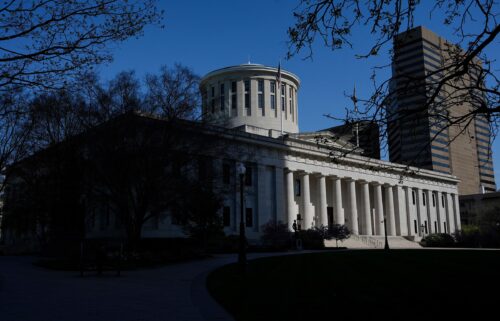Border Patrol facility notorious for chain-link cells to close for renovations
A US Border Patrol facility in south Texas that came under scrutiny this year for severe overcrowding and gained notoriety for its large chain-link cells is expected to close for renovations next spring, according to a senior Border Patrol official.
The short-term detention facility in McAllen, Texas — known as the Centralized Processing Center — was found by an internal government watchdog to be dangerously overcrowded last summer amid a surge in mostly Central American migrant families and children arriving at the US-Mexico border. It has also been derided by advocates and Democratic lawmakers for housing migrants in “cages,” large chain-link pods that separate groups of people.
The processing center, which was set up during the Obama administration in the wake of the 2014 unaccompanied-minor crisis, was touted at the time as an improvement for migrants temporarily detained at the border. However, under the Trump administration it became associated with overcrowding and illness.
The facility will be updated to “bring the conditions up” and make it more comfortable, said the official, who was not authorized to speak publicly. “We recognize that we have outgrown that facility,” the official added.
The building — a converted warehouse — will remain in place while the interior is renovated, including the removal of the chain-link fencing, said the official. New separations to allow for more privacy are expected to be installed instead.
A Customs and Border Protection official said construction is expected to take at least 14 months.
Then-acting Homeland Security Secretary Kevin McAleenan testified in April that the department wanted to renovate the facility.
“We’re going to take out the chain link. We’re going to have partitions that — that are more appropriate in terms of appearance, as we protect families in our custody,” he said.
The agency declined to comment to CNN for this story.
The large facility has served as a hub for detaining and processing migrant families and unaccompanied children in the Rio Grande Valley region of Texas, which consistently has had the largest volume of apprehensions on the US-Mexico border.
The processing center was stretched to its limits this year. Designed to hold 1,500, it was crammed with 2,200 migrants when CNN visited last March. Capacity continued to be an issue in later months as the number of migrants arriving at the border soared to the highest level in more than a decade. Earlier this year, Customs and Border Protection facilities at the southern border overflowed with people who were not transferred fast enough to make room for additional migrants arrested for crossing the border illegally.
Inside the building, the cement floor is lined with green gym mats that fill the chain-link cells and people use Mylar blankets to keep warm. There are laundry facilities and showers — amenities not available at all Border Patrol stations.
At the height of the migrant influx in May, Border Patrol in the Rio Grande Valley arrested nearly 50,000 people in one month. That was down to fewer than 10,000 people in October, the most recent month of available data.
Border Patrol is required to swiftly transfer migrants from its custody to other government agencies, which handle long-term detention and care. But earlier this year, many children and adults were held beyond the 72-hour limit, a result of the spike in people arriving at the border and the inability of the government to keep pace.
For example, in June, 165 unaccompanied children who were awaiting transfer to Health and Human Services custody remained at the Central Processing Center for more than a week, according to a Department of Homeland Security inspector general report.
The processing center also gained attention while the Trump administration was carrying out its “zero tolerance policy” last year, which led to the separation of thousands of children from their parents. Protesters and lawmakers descended on the facility at the time.
“In wire-mesh, chain-linked cages that are about 30×30, a lot of young folks put into them,” Democratic Sen. Jeff Merkley of Oregon said in June 2018 after visiting the facility.
In May, the facility was temporarily closed to new detainees, after at least 32 migrants tested positive for influenza. Detainees diagnosed with the flu were moved to nearby Border Patrol facilities where they could be isolated from others in custody, a Customs and Border Protection official said at the time.
The decision to shut down intake came after the death of a 16-year-old who’d been detained there for days and was later diagnosed with influenza A.
While the facility in McAllen is undergoing renovations, Border Patrol will use temporary tent facilities in Donna, Texas. In May, Customs and Border Protection erected steel and vinyl structures in Donna and El Paso, Texas, to help address the need for more short-term detention space.




